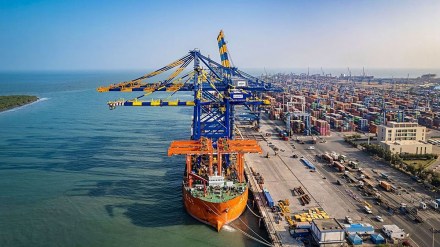By Ganeshan Wignaraja & Aliasger Bootwalla
When presenting the Interim Budget for FY25, finance minister Nirmala Sitharaman mentioned that 2023 witnessed a continuation of the multifaced polycrisis, ranging from lingering effects of the Covid-19 pandemic, the tightening monetary policies across countries, to the rise of geopolitical tensions linked to the Russia-Ukraine and Israel-Hamas conflicts. This clouds global trade, which will have significant implications for South Asia with the backdrop of the US and Chinese economies slowing.
In this turbulent decade, India aspires to become a top five global economy by 2030 as it develops as a manufacturing hub, moving towards export-driven growth. The time seems right for India, as multinational companies reduce their reliance on China due to factors like rising wages, domestic supply chain bottlenecks, and investor concerns about tighter regulation of foreign firms, coupled with the country’s escalating trade war with the US.
China-centric global supply chains have been being disrupted, with Vietnam and Thailand emerging as big winners. India too has the ambition to become a complementary Asian manufacturing hub by reaping gains from the recently-announced India-Middle East-Europe Economic Corridor, foreign technology transfers, and creating value-adding jobs. This is seen by Apple ramping up its manufacturing of iPhones in the country, Toyota stepping up its investment by setting up a new plant in Karnataka, and Hyundai increasing its capacity and fostering technological advancement by its recent investment in Maharashtra.
India’s attractiveness to foreign investors is linked to geopolitical and economic factors. The WTO listed India as the fifth-largest importer of intermediate goods, parts, and components in the second quarter of 2023—up from the 10th rank in the second quarter of 2021. Indian services can also gain, including in IT and communications technology, financial and professional services, and transport and logistics.
Since 2022, the government has placed renewed emphasis on preferential openings with trading partners through a flurry of bilateral trade deals such as the UAE-India Comprehensive Economic Partnership Agreement (CEPA) and the Australia-India Economic Cooperation and Trade Agreement (ECTA), along with joining big regional trade frameworks like the Indo-Pacific Economic Framework (IPEF). It makes economic sense for India to spread the gains from this trade regionally. It will stabilise the region, increase jobs, and make it less vulnerable to Chinese investments.
Currently, South Asia is not a big part of India’s trade story, even though some countries have economic potential. Its growth story so far can be divided into three parts. India and Bangladesh have better growth prospects; Nepal, Bhutan and Maldives are reasonable; and Pakistan and Sri Lanka have weaker prospects, as illustrated in the accompanying graphic.
Indian businesses should invest in the region and foster significant local linkages and spillovers for its South Asian partners. Some of this is happening in Sri Lanka and Bangladesh. Greater private investment in consumer-oriented sectors and in start-ups in fintech, healthcare, and agritech can help develop a local ecosystem, with access to seed funding and technology transfer from India.
The bandwagon of FTAs saw a high in 2020s, and much of it took place in East Asia with Japan, China, Korea, and Singapore at the forefront. Over time, these deals can provide for increased trade and foreign investment gains for India. It will be useful for India to carefully revaluate the gains from mega FTAs in Asia such as the Comprehensive and Progressive Agreement for Trans-Pacific Partnership (CPTPP) and Regional Comprehensive Economic Partnership (RCEP), which include agendas for services trade, investment rules, intellectual property rights, government procurement and other pertinent issues to support supply chains.
Regional institutions which shape local diplomatic and technical discussions are another facet of South Asia’s trade architecture. Sadly, initial hopes for the South Asian Association for Regional Cooperation (SAARC) have failed to materialise and its outlook seems bleak. Recognising this, India is switching its diplomatic efforts to bilateral engagement and other minilateral approaches such as the Bay of Bengal Initiative for Multi-Sectoral Technical and Economic Cooperation (BIMSTEC) and the Indian Ocean Rim Association (IORA), which are more relevant to South Asia. But unlike ASEAN, these institutions lack substantive mandates and capacity to be effective, for now. An Indian diplomat assuming the Secretary-General post for BIMSTEC can provide an opportunity for India to shape its mandate and better resource it.
There is global buzz around a rising India in an uncertain global era. An India which includes the rest of South Asia through regional supply chains and a better trade architecture is a win for the country and its South Asian neighbourhood.
Ganeshan Wignaraja & Aliasger Bootwalla, respectively, professorial fellow, trade and economics, and manager, for research, media and partnerships, Gateway House: Indian Council on Global Relations, Mumbai. Views are personal.
